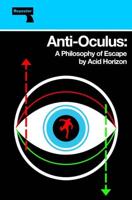Publisher's Synopsis
Excerpt from International Congress of Arts and Science, Vol. 13: Economics and Social Regulation
The purpose of the deliberations of this Department will be to point out the present status of economic thought and to indicate the present trend of economic thinking. There is much evidence that economists are to-day coming to view political economy less as their predecessors of twenty-five and fifty years ago did, and to regard the science as it was conceived by Adam Smith. In Smith's classic work on the Wealth of Nations, the discussion and analysis of pro duction occupies the larger part of the volume. Smith was con cerned but little with the distribution of wealth, but endeavored to put in scientific form the principles of the production of wealth.
Adam Smith and his successors for over a half-century studied production very largely to the exclusion of other phases of economics, because of the universal necessity for a greater amount of wealth. The intellectual and social progress during the latter part of the eighteenth and during the nineteenth century caused men to realize more clearly than ever before the necessity for more efficient pro duction in order to satisfy the expanding wants of various classes of society.
With the industrial development of the nineteenth century and with the rapid accumulation of wealth, the ethical problems of distribution came to occupy the thought of social philosophers and turned the minds of economists toward ethical problems. The problems of distribution received almost exclusive attention for a score of years following 1880. In dealing with the theory of value and with the principles of the distribution of wealth, the most notable contributions were made by the Austrian and American economists, although J evons and other English writers contributed in no small measure to the theory of distribution. The American people may well be proud of the achievements of their countrymen in the develop ing of the theory of the distribution of wealth.
About the Publisher
Forgotten Books publishes hundreds of thousands of rare and classic books. Find more at www.forgottenbooks.com
This book is a reproduction of an important historical work. Forgotten Books uses state-of-the-art technology to digitally reconstruct the work, preserving the original format whilst repairing imperfections present in the aged copy. In rare cases, an imperfection in the original, such as a blemish or missing page, may be replicated in our edition. We do, however, repair the vast majority of imperfections successfully; any imperfections that remain are intentionally left to preserve the state of such historical works.









